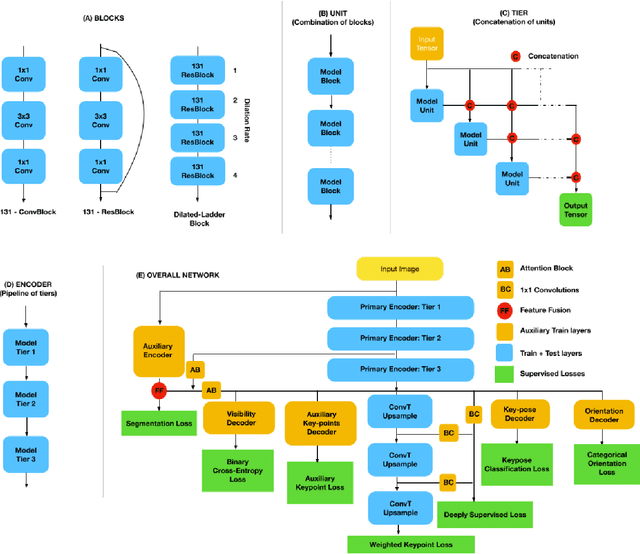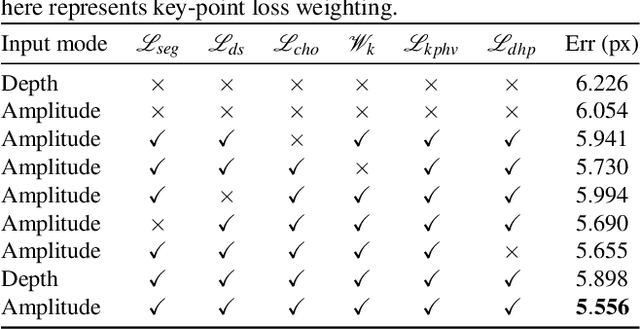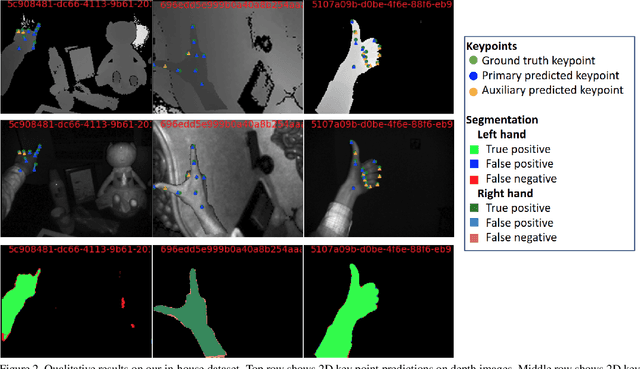Adithya Rao
Magic Leap, Inc
Efficient 2.5D Hand Pose Estimation via Auxiliary Multi-Task Training for Embedded Devices
Sep 12, 2019



Abstract:2D Key-point estimation is an important precursor to 3D pose estimation problems for human body and hands. In this work, we discuss the data, architecture, and training procedure necessary to deploy extremely efficient 2.5D hand pose estimation on embedded devices with highly constrained memory and compute envelope, such as AR/VR wearables. Our 2.5D hand pose estimation consists of 2D key-point estimation of joint positions on an egocentric image, captured by a depth sensor, and lifted to 2.5D using the corresponding depth values. Our contributions are two fold: (a) We discuss data labeling and augmentation strategies, the modules in the network architecture that collectively lead to $3\%$ the flop count and $2\%$ the number of parameters when compared to the state of the art MobileNetV2 architecture. (b) We propose an auxiliary multi-task training strategy needed to compensate for the small capacity of the network while achieving comparable performance to MobileNetV2. Our 32-bit trained model has a memory footprint of less than 300 Kilobytes, operates at more than 50 Hz with less than 35 MFLOPs.
Actionable and Political Text Classification using Word Embeddings and LSTM
Jul 13, 2016



Abstract:In this work, we apply word embeddings and neural networks with Long Short-Term Memory (LSTM) to text classification problems, where the classification criteria are decided by the context of the application. We examine two applications in particular. The first is that of Actionability, where we build models to classify social media messages from customers of service providers as Actionable or Non-Actionable. We build models for over 30 different languages for actionability, and most of the models achieve accuracy around 85%, with some reaching over 90% accuracy. We also show that using LSTM neural networks with word embeddings vastly outperform traditional techniques. Second, we explore classification of messages with respect to political leaning, where social media messages are classified as Democratic or Republican. The model is able to classify messages with a high accuracy of 87.57%. As part of our experiments, we vary different hyperparameters of the neural networks, and report the effect of such variation on the accuracy. These actionability models have been deployed to production and help company agents provide customer support by prioritizing which messages to respond to. The model for political leaning has been opened and made available for wider use.
 Add to Chrome
Add to Chrome Add to Firefox
Add to Firefox Add to Edge
Add to Edge